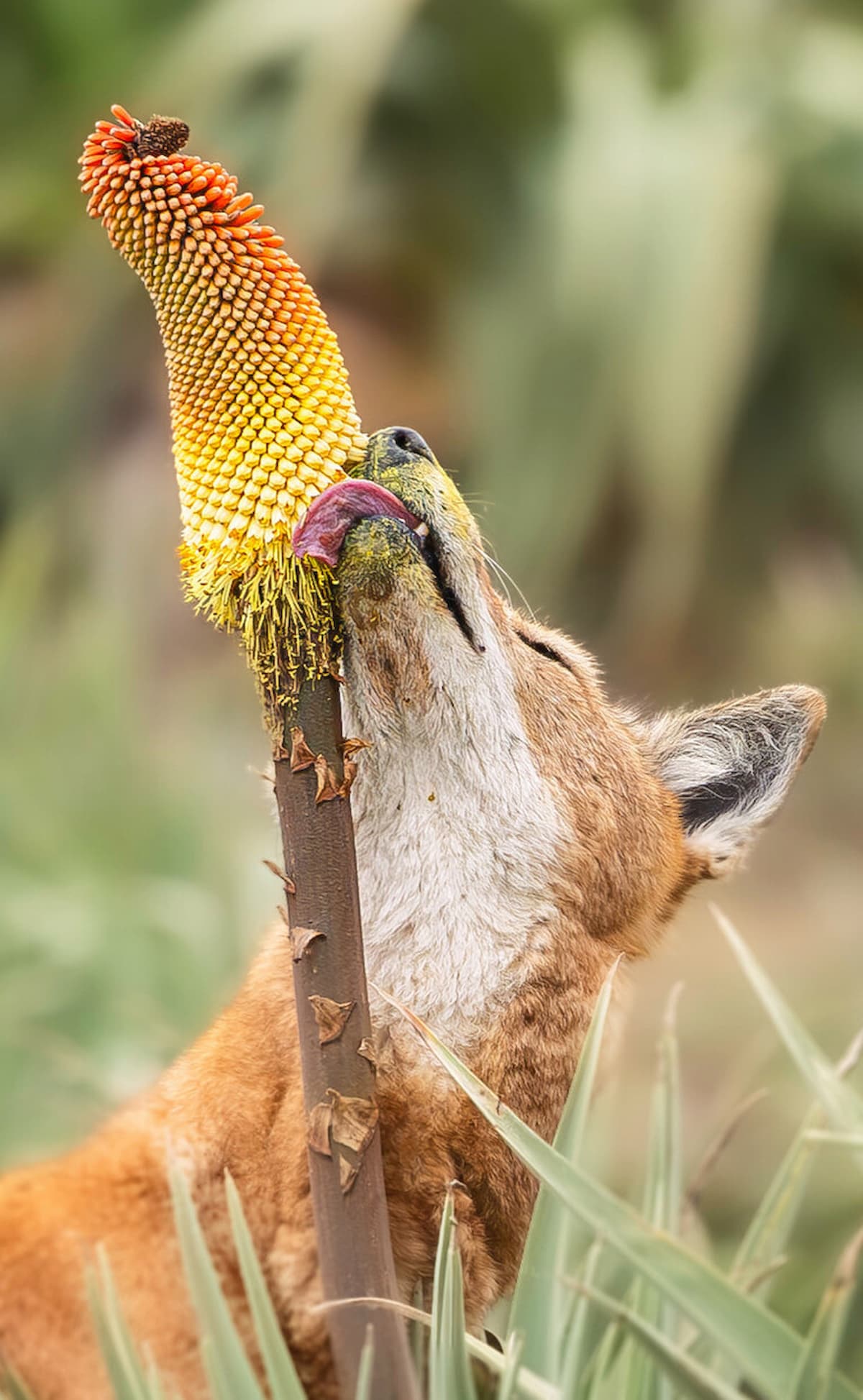The Ethiopian wolves are in critical danger of extinction. That is why, in a recent study on the feeding behavior of the species, it surprised them by registering an unusual interaction.
They photographed some specimens feeding on nectar from the Kniphofia foliosa plant.
The research was carried out by scientists from the Ethiopian Wolf Conservation Program (EWCP), a joint initiative between the Wildlife Conservation Research Unit (WildCRU) at the University of Oxford, the Ethiopian Wildlife Conservation Authority (EWCA), and Dinkenesh Ethiopia.
The behavior of Ethiopian wolves
During the study, researchers observed how some wolves visited up to 30 flowers in a single trip, with specimens from different packs, taking advantage of this food source.
This behavior is particularly noteworthy. It could be one of the first documented pollination interactions between a large predator and a plant.

According to the conclusions, as wolves feed on the nectar of the Kniphofia foliosa flower, their muzzles get covered in pollen, which could facilitate the transfer of pollen from one flower to another.
This peculiar interaction highlights the potential role of predators in pollination, a process generally associated with species such as bees, butterflies, and birds.
Dr. Sandra Lai, a scientist at EWCP at the University of Oxford and lead author of the study, emphasized the importance of this discovery. “These findings demonstrate how complex the ecosystem of the Ethiopian highlands is, known as the ‘Roof of Africa,’ and how much is still to be learned about the interactions between species in this unique and biodiverse environment,” she expressed.
However, this ecosystem faces a serious threat due to the loss and fragmentation of its natural habitat, increasing the challenges for the conservation of the Ethiopian wolf, considered the rarest canid in the world.
Do you already know our YouTube channel? Subscribe!

